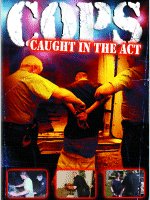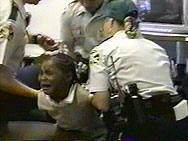The situation of the prelingually deaf, prior to 1750, was indeed
a calamity: unable to acquire speech, hence dumb
or
mute
; unable to enjoy free communication with even their
parents and families; confined to a few rudimentary signs and
gestures; cut off, except in large cities, even from the community
of their own kind; deprived of literacy and education, all
knowledge of the world; forced to do the most menial work; living
alone, often close to destitution; treated by the law and society
as little better than imbeciles–the lot of the deaf was manifestly
dreadful.
But what was manifest was as nothing to the destitution inside–the
destitution of knowledge and thought that prelingual deafness could
bring, in the absence of any communication or remedial measures.
The deplorable state of the deaf aroused both the curiosity and the
compassion of the philosophes. Thus the
Abbé Sicard asked:
Why is the uneducated deaf person isolated in nature and unable
to communicate with other men? Why is he reduced to this state
of imbecility? Does his biological constitution differ from ours?
Does he not have everything he needs for having sensations,
acquiring ideas, and combining them to do everything that we do?
Does he not get sensory impressions from objects as we do? Are
these not, as with us, the occasion of the mind’s sensations and
its acquired ideas? Why then does the deaf person remain stupid
while we become intelligent?
To ask this question–never really clearly asked before–is to
grasp its answer, to see that the answer lies in the use of
symbols. It is, Sicard continues, because the deaf person has
no symbols for fixing and combining ideas … that there is a
total communication-gap between him and other people.
But what
was all-important, and had been a source of fundamental confusion
since Aristotle’s pronouncements on the matter, was the enduring
misconception that symbols had to be speech. Perhaps indeed this
passionte misperception, or prejudice, went back to biblical days:
the subhuman status of mutes was part of the Mosaic code, and it
was reinforced by the biblical exaltation of voice and ear as the
one and true way in which man and God could speak (In the
beginning was the Word
). And yet, overborne by Mosaic and
Aristotelian thunderings, some profound voices intimated that this
need not be so. Thus Socrates’ remark in the
Cratylus of Plato, which so impressed the
youthful Abbé de l’Epée:
If we had neither voice nor tongue, and yet wished to manifest
things to one another, should we not, like those which are at
present mute, endeavour to signify our meaning by the hands,
head, and other parts of the body?
Or the deep, yet obvious, insights of the philosopher-physician
Cardan in the sixteenth century:
It is possible to place a deaf-mute in a position to hear by
reading, and to speak by writing … for as different sounds are
conventionally used to signify different things, so also may the
various figures of objects and words …. Written characters and
ideas may be connected without the intervention of actual sounds.
In the sixteenth century the notion that the understanding of ideas
did not depend upon the hearing of words was revolutionary.
But it is not (usually) the ideas of philosophers that change
reality; nor, conversely, is it the practice of ordinary people.
What changes history, what kindles revolutions, is the meeting of
the two. A lofty mind–that of the Abbé de l’Epée–had to meet a
humble usage–the indigenous sign language of the poor deaf who
roamed Paris–in order to make possible a momentous transformation.
If we ask why this meeting had not occurred before, it has
something to do with the vocation of Abbé, who could not bear to
think of the souls of the deaf-mute living and dying unshriven,
deprived of the Catechism, the Scriptures, the Word of God; and it
is partly owing to his humility–that he listened to the
deaf–and partly to a philosophical and linguistic idea then very
much in the air–that of universal language, like the speceium of which Leibniz dreamed. Thus, de
l’Epée approached sign language not with contempt but with awe.
The universal language that your scholars have sought for in vain
and of which they have despaired, is here; it is right before your
eyes, it is the mimicry of the impoverished deaf. Because you do
not know it,you hold it in contempt, yet it alone will provide you
with the key to all languages.
That this was a misapprehension–for sign language is not a
universal language in this grand sense, and Leibniz’s noble dream
was probably a chimera–did not matter, was even an advantage. For
what mattered was that the Abbé paid minute attention to his
pupils, acquired their language (which had scarcely ever been done
by the hearing before). And then, by associating signs with
pictures and written words, he taught them to read; and with this,
in one swoop, he opened to them the world’s learning and culture.
De l’Epée’s system of methodical
signs–a combination of
their own Sign with signed French grammar–enabled deaf students to
write down what was said to them through a signing interpreter, a
method so successful that, for the first time, it enabled ordinary
deaf pupils to read and write French, and thus acquire an
education. His school, founded in 1755, was the first to achieve
public support. He trained a multitude of teachers for the deaf,
who, by the time of his death in 1789, had established twenty-one
schools for the deaf in France and Europe. The future of de
l’Epée’s own school seemed uncertain during the turmoil of the
revolution, but by 1791 it had become the National Institution for
Deaf-Mutes in Paris, headed by the brilliant grammarian Sicard. De
l’Epée’s own book, as revolutionary as Copernicus’ in its own way,
was first published in 1776.
De l’Epée’s book, a classic, is available in many languages.
But what have not been available, have been virtually unknown, are
the equally important (and, in some ways, even more fascinating)
original writings of the deaf–the first deaf-mutes ever able to
write. Harlan Lane and Franklin Philip have done a great service in
making these so readily available to us in The Deaf Experience. Especially moving
and important are the 1779 Observations
of Pierre Desloges–the first book to be published by a deaf
person–now available in English for the first time. Desloges
himself, deafened at an early age, and virtually without speech,
provides us first with a frightening description of the world, or
unworld, of the languageless.
At the beginning of my infirmity, and for as long as I was living
apart from other deaf people … I was unaware of sign language.
I used only scattered, isolated, and unconnected signs. I did not
know the art of combining them to form distinct pictures with
which one can represent various ideas, transmit them to one’s
peers, and converse in logical discourse.
Thus Desloges, though obviously a highly gifted man, could scarcely
entertain ideas,
or engage in logical discourse,
until he had acquired sign language (which, as is usual with the
deaf, he learned from someone deaf, in his case from an illiterate
deaf-mute).
–Oliver Sacks (1989), Seeing Voices: A Journey into the World of the Deaf, pp. 13–18.
When Laurent Clerc (a pupil of Massieu, himself a pupil of Sicard)
came to the United States in 1816, he had an immediate and
extraordinary impact, for American teachers up to this point had
never been exposed to, never even imagined, a deaf-mute of
impressive intelligence and education, had never imagined the
possibilities dormant in the deaf. With Thomas Gallaudet, Clerc set
up the American Asylum for the Deaf, in Hartford, in 1817. As
Paris–teachers, philosophes, and
public-at-large–was moved, amazed, converted
by de l’Epée
in the 1770s, so America was to be converted fifty years later.
The atmosphere at the Hartford Asylum, and at other schools soon to
be set up, was marked by the sort of enthusiasm and excitement only
seen at the start of grand intellectual and humanitarian
adventures. The prompt and spectacular success of the Hartford
Asylum soon led to the opening of other schools wherever there was
sufficient density of population, and thus of deaf students.
Virtually all the teachers of the deaf (nearly all of whom were
fluent signers and many of whom were deaf) went to Hartford. The
French sign system imported by Clerc rapidly amalgamated with the
indigenous sign languages here–the deaf generate sign languages
wherever there are communities of deaf people; it is for them the
easiest and most natural form of communication–to form a uniquely
expressive and powerful hybrid, American Sign Language (ASL). A
special indigenous strength–presented convincingly by Nora Ellen
Groce in her book, Everyone Here Spoke Sign Language–was the contribution of Martha’s Vineyard deaf
to the development of ASL. A substantial minority of the population
there suffered from a hereditary deafness, and most of the island
had adopted an easy and powerful sign language. Virtually all the
deaf of the Vineyard were sent to the Hartford Asylum in its
formative years, where they contributed to the developing national
language the unique strength of their own.
One has, indeed, a strong sense of pollination, of people coming to
and fro, bringing regional languages, with all their idiosyncracies
and strengths, to Hartford, and taking back an increasingly
polished and generalized language. The rise of deaf literacy and
deaf education was as spectacular in the United States as it had
been in France, and soon spread to other parts of the world.
Lane estimates that by 1869 there were 550 teachers of the deaf
worldwide and that 41 percent of the teachers of the deaf in the
United States were themselves deaf. In 1864 Congress passed a law
authorizing the Columbia Institution for the Deaf and the Blind
in Washington to become a national deaf-mute college, the first
institution of higher learning specifically for the deaf. Its first
principal was Edward Gallaudet–the son of Thomas Gallaudet, who
had brought Clerc to the United States in 1816. Gallaudet College,
as it was later rechristened (it is now Gallaudet University), is
still the only liberal arts college for deaf students in the
world–though there are now several programs and institutes for the
deaf associated with technical colleges. (The most famous of these
is at the Rochester Institute of Technology, where there are more
than 1,500 deaf students forming the National Technical Institute
for the Deaf.)
The great impetus of deaf education and liberation, which had swept
France between 1770 and 1820, thus continued its triumphant course
in the United States until 1870 (Clerc, immensely active to the end
and personally charismatic, died in 1869). And then–and this is
the turning point in the entire story–the tide turned, turned
against the use of Sign by and for the deaf, so that within twenty
years the work of a century was undone.
Indeed, what was happening with the deaf and sign was part of a
general (and if one wishes, political
) movement of the time:
a trend to Victorian oppressiveness and conformism, intolerance of
minorities, and minority usages, of every kind–religious,
linguistic, ethnic. Thus it was at this time that the little
nations
and little languages
of the world (for example,
Wales and Welsh) found themselves under pressure to assimilate
and conform.
–Oliver Sacks (1989), Seeing Voices: A Journey into the World of the Deaf, pp. 21–24.
 We already knew that
We already knew that  A lawyer has threatened to sue police officers who handcuffed an
allegedly uncontrollable five-year-old after she acted up at a
Florida kindergarten.
A lawyer has threatened to sue police officers who handcuffed an
allegedly uncontrollable five-year-old after she acted up at a
Florida kindergarten.